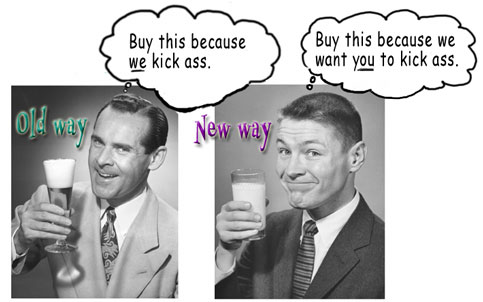Location-Based Content Delivery Today marks the close of the 2008 NYC Web 2.0 Expo, and the very last session I attended offered one of the most intriguing tools. Chad Stoller, head of marketing for Drop.io, and Conor Brady, creative director for Organic, Inc., presented the result of their collaborative efforts.
Drop.io allows you to upload files to a secure online drop and share them with others. Combine the ease of Drop.io with the interactive marketing savvy of Organic, Inc. and you end up with Drop.io Location, which lets you drop a file and associate it with an area on a Web-based map. GPS-enabled mobile phone users can then download your files when they’re in the location you’ve specified.
I know what you’re thinking. We’ve come so far with technology that we’ve essentially traveled full-circle. Sending files electronically is a modern convenience that’s worn out its welcome, so we’re now creating tools that require people to travel to retrieve files?
True, you wouldn’t want to email your boss the following:
“Hey Mr. Johnson, I’ve completed the 2008 Second Quarter Report. If you’d like to review it, go to the Starbuck’s at the corner of 8th and Walnut.”
Mr. Johnson would probably tell you to pick up your pink slip at the corner of No Way Street and Suck It Avenue.
But Stoller and Brady offered some thoughts on how Drop.io Location might have practical value, and I’ll translate their examples to befit the arts.
Example 1: A local band has written some new songs exclusively for a theater company’s new production, and the only way for people to get those songs is to attend a performance of the play. The songs have been uploaded to Drop.io and associated with the theater’s address.
Example 2: A city has launched a new public art exhibit and wants to offer site-specific content beyond the traditional audio guides. Files could be dropped based on the location of each art piece and visitors could use their mobile devices to retrieve the content.
It’s a truly amazing tool, and it’s clear that Stoller and Brady are looking ahead. Location-based interactivity is the next major phase of marketing.
Drop.io Location is currently in beta, and you can request an account here.
Thought for the Day
If I Google search your name and get no results, does that reflect poorly on you as a human being? I think it does. Shame on you.
Web 2.0 Adventure
As there were nearly 5,000 people in attendance at the Web 2.0 Expo, it wasn’t a simple feat to physically connect with people. Case in point - my meeting with Jason Fried and David Heinemeier Hansson of 37Signals.
At about 4:30 PM yesterday, I received a text from Fried: “We’re at the keynote hall. Want to come our way?”
Me: “Cool. Be right there.”
As I arrived at the keynote hall, I received this from Fried: “Now we’re in the main lobby.”
Me: “OK, Headed that way.”
I rush to the main lobby only to receive: “Now we’re upstairs near registration.”
By this point, I was hearing the theme music from 24, and I felt like Jack Bauer in a race to save the life of some random dignitary.
Ultimately, I caught up with the 37Signals guys, and my interview with them will be featured on Technology in the Arts Podcast #51 next Friday, September 26.







